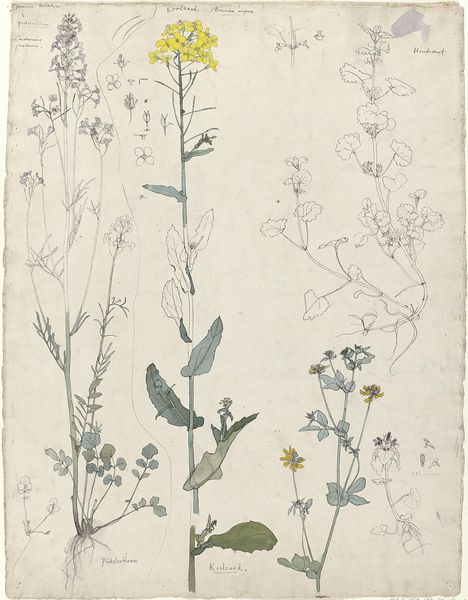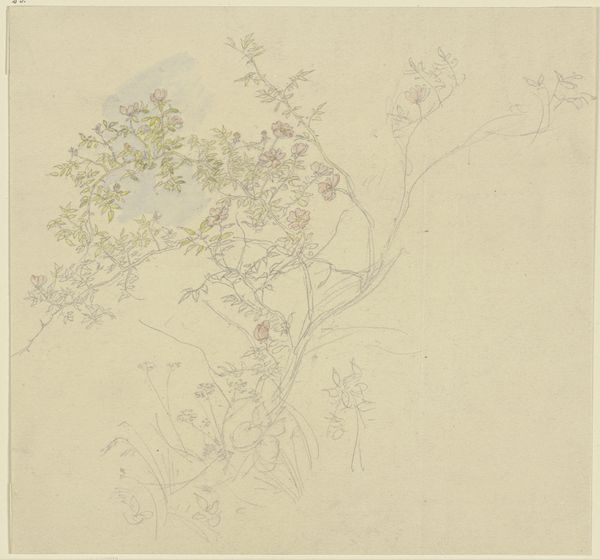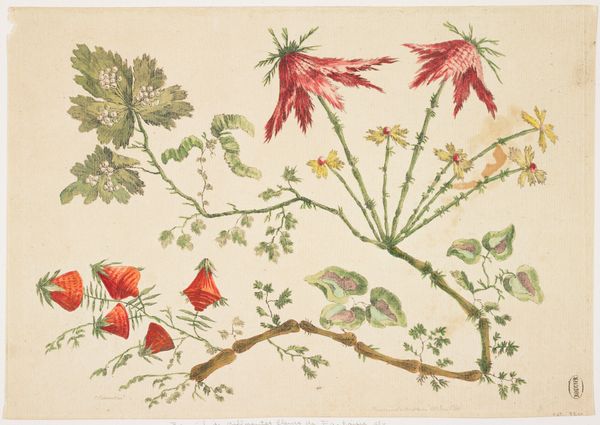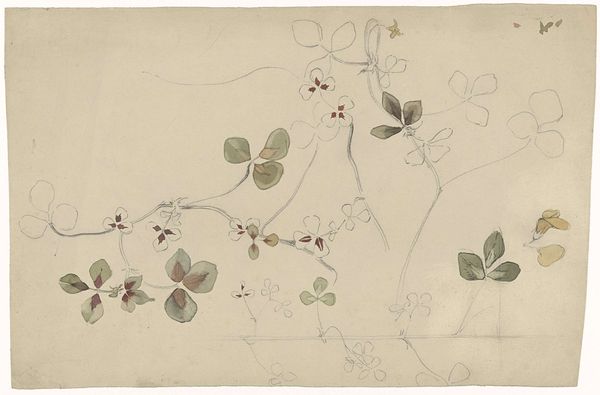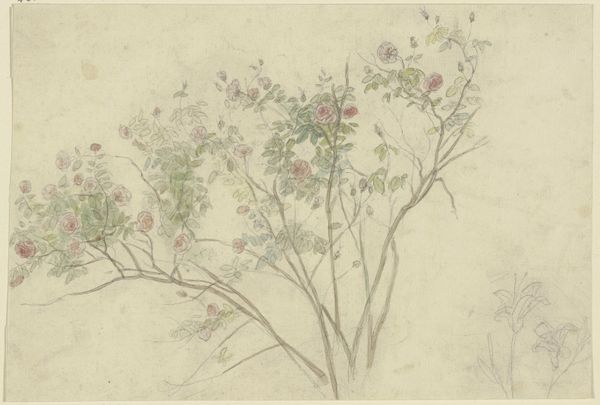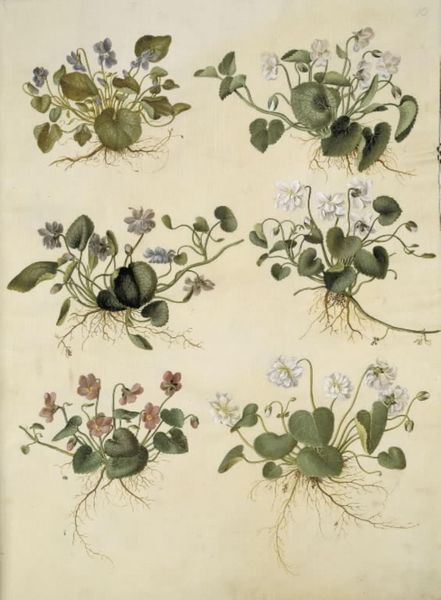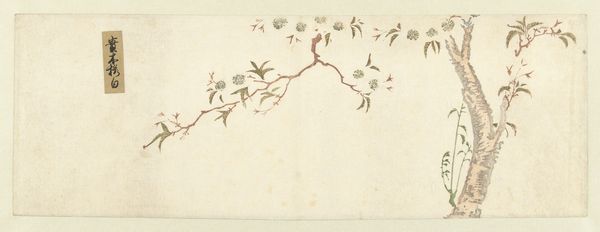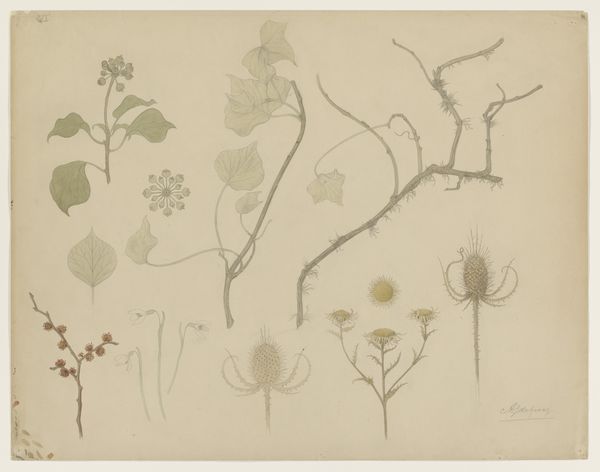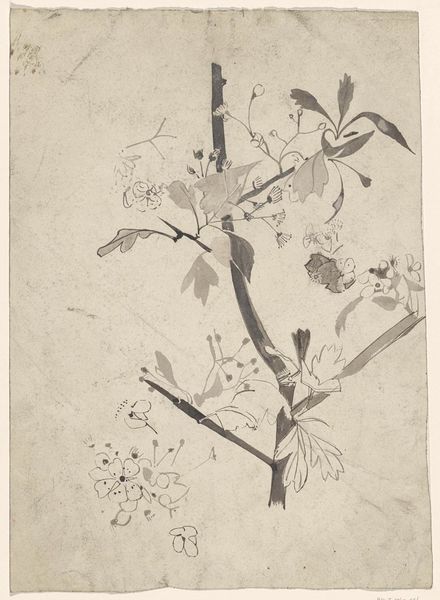
Dimensions: height 623 mm, width 480 mm
Copyright: Rijks Museum: Open Domain
Editor: Here we have Theo Nieuwenhuis's "Studies van planten", created sometime between 1876 and 1951, using pencil, ink, watercolor, and etching on paper. It's currently held in the Rijksmuseum. There's a gentle, almost scientific quality to it, a real attention to botanical detail, yet also artistically beautiful. What can you tell me about it? Curator: Well, it’s fascinating to consider this work within the context of its time. Nieuwenhuis was working during a period when the roles of art and science were undergoing significant shifts. How do you think botanical studies like these participated in, or even shaped, broader public perceptions of nature and the environment? Editor: That’s interesting... I hadn’t really considered that angle. I was just thinking about the aesthetic qualities and the artist’s skill. But I see what you mean, the image almost bridges those worlds. How were botanical studies normally shared with the public at the time? Curator: Often through publications, like encyclopedias, educational materials, and even as decorative elements in the home. These images influenced how people understood the natural world. Do you think a drawing like this could be interpreted as a form of public education, or something else entirely? Editor: Perhaps a little of both? It certainly offers information but presents it in a very beautiful way, not just as scientific data. Curator: Exactly! So what’s most intriguing is its role in negotiating those boundaries, shaping taste, and also reinforcing certain values. Do you notice the detailed labelling of the plants, and what effect it may have had? Editor: I do see the botanical names hand-written alongside each plant specimen. It helps establish credibility, even authority. I wonder who the audience for something like this would have been originally? Curator: Perhaps other artists, naturalists, or even patrons with an interest in science and art. It highlights a key feature – art as both aesthetic object and as a form of knowledge dissemination. What has resonated most with you, seeing it in this way? Editor: Thinking about it as something much bigger than just a pretty picture, that the image participated in communicating broader cultural values and knowledge systems related to the natural world. Curator: Exactly! It demonstrates how art never exists in a vacuum but is part of larger networks of meaning and power.
Comments
No comments
Be the first to comment and join the conversation on the ultimate creative platform.
